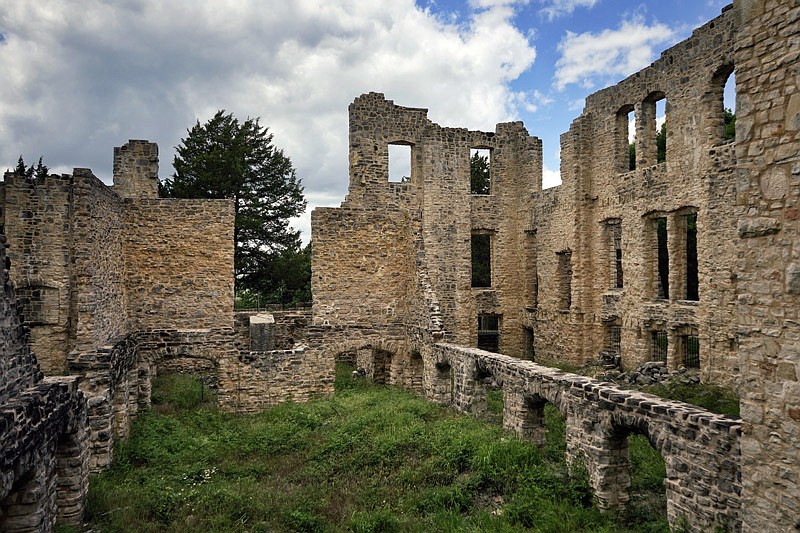Missouri's diverse history, geology and landscapes have been preserved for 100 years through the Missouri State Park System.
The state parks system marked its century of existence officially on April 10.
Although the Arrow Rock State Historic Site - and the J Huston Tavern, the oldest continually operating restaurant west of the Mississippi River - was the first site to be acquired in 1923, the concept of preserving historic and natural treasures had been a growing concept for more than two decades.
On the federal scene, President Theodore Roosevelt was promoting national parks; the National Park Service was formed in 1916. Missouri Gov. Herbert Hadley was doing the same on the state level.
In 1907, he was taking reporters out to camp and explore in areas Hadley had in mind to become parks, Deputy Director David Kelly said.
Among those were Arrow Rock, Big Spring State Park - now part of the federal Ozark National Scenic Riverways - and Bennett Spring State Park. The latter two were added in 1924 along with the Mark Twain State Park and the Mark Twain Birthplace State Historic Site.
Within two years, the park system had acquired eight sites and more than 23,000 acres.
From the very beginning in Missouri, the parks system included both land and historic sites, Kelly noted. That is not the case in many state park systems.
Legislation passed in 1917, only a week before the United States entered World War I, funded the state park system using revenue from the fish and game department, predecessor to today's Department of Conservation.
Parks separated from conservation in 1937, as their missions diverged. The system was overseen by the Missouri State Park Board until 1974, when the Department of Natural Resources was created.
The parks were supported through a mill tax, included in the state Constitution in 1945 and extended in 1960 but expired in 1972.
Missourians approved a one-tenth-of-one-percent sales tax in 1984, and voters have renewed it in 1988, 1996 and 2006. Unlike many Midwestern states, Missouri has never charged entrance fees to any of its sites.
As motor vehicles and 40-hour work weeks became more common, the parks became a destination for city dwellers, Kelly said. The parks encouraged the development of Missouri's early roadways.
The parks saw significant change and development in the 1930s with the federal Civilian Conservation Corp (CCC). By 1934, more than 4,000 men were working on conservation and construction projects in national and state forests and parks.
Most of the CCC's work in Missouri's park system - more than 340 structures - was added to the National Register of Historic Places in 1985.
The cabins and lodges built by the CCC continue to be among the most popular facilities in the state parks, Kelly said.
"They still have the traditional look but with modern amenities," he said.
Mid-Missouri state parks
Missouri State Parks and Historic Sites in Central Missouri, and the year they were added to the organization, include:
- 1923, Arrow Rock State Historic Site
- 1932, Van Meter State Park
- 1960, Boone's Lick State Historic Site
- 1967, Rock Bridge Memorial State Park
- 1970, Jewell Cemetery State Historic Site
- 1970, Sappington Cemetery State Historic Site
- 1973, Finger Lakes State Park
- 1974, Bothwell Lodge State Historic Site
- 1976, Jefferson Landing State Historic Site
- 1987, Katy Trail State Park
- 2002, Clark's Hill/Norton State Historic Site



